-
 Bitcoin
Bitcoin $117700
-1.00% -
 Ethereum
Ethereum $4458
-3.91% -
 XRP
XRP $3.119
0.14% -
 Tether USDt
Tether USDt $1.001
-0.02% -
 BNB
BNB $836.6
-1.56% -
 Solana
Solana $189.5
-3.90% -
 USDC
USDC $0.9998
-0.02% -
 Dogecoin
Dogecoin $0.2335
1.29% -
 Cardano
Cardano $0.9642
1.51% -
 TRON
TRON $0.3539
-1.19% -
 Hyperliquid
Hyperliquid $47.41
-1.84% -
 Chainlink
Chainlink $21.92
-3.28% -
 Stellar
Stellar $0.4286
-0.23% -
 Sui
Sui $3.724
-3.29% -
 Bitcoin Cash
Bitcoin Cash $594.8
-0.78% -
 Ethena USDe
Ethena USDe $1.001
0.04% -
 Hedera
Hedera $0.2501
-2.06% -
 Avalanche
Avalanche $23.96
-4.87% -
 Litecoin
Litecoin $119.0
-2.32% -
 Toncoin
Toncoin $3.473
0.82% -
 UNUS SED LEO
UNUS SED LEO $9.596
0.17% -
 Shiba Inu
Shiba Inu $0.00001301
-0.39% -
 Uniswap
Uniswap $11.03
-0.25% -
 Polkadot
Polkadot $3.935
-2.62% -
 Dai
Dai $1.000
0.01% -
 Bitget Token
Bitget Token $4.564
-1.76% -
 Cronos
Cronos $0.1512
-4.11% -
 Ethena
Ethena $0.7306
-1.09% -
 Pepe
Pepe $0.00001087
-2.68% -
 Aave
Aave $300.2
-4.00%
How to backup and restore the private key of a Binance wallet?
Secure your Binance crypto by safeguarding your unique seed phrase; losing it means irreversible loss of access to your funds, as Binance cannot recover it.
Mar 24, 2025 at 04:35 pm
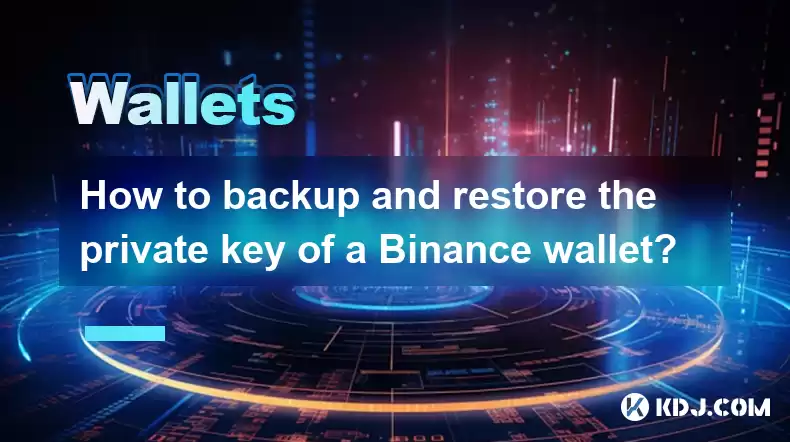
Key Points:
- Binance does not directly manage private keys for its users. Security relies on users safeguarding their own keys.
- Backing up a Binance wallet's private key involves securing the key phrase (seed phrase) provided during wallet creation.
- Restoring a Binance wallet involves using this seed phrase to access your funds on a new device or wallet.
- Losing your seed phrase results in irreversible loss of access to your cryptocurrency.
- There are no methods to recover a lost seed phrase from Binance.
How to Backup and Restore the Private Key of a Binance Wallet?
Understanding the crucial difference between a Binance account and a Binance wallet is paramount. Your Binance account is your user profile on the exchange, allowing access to trading and account management. However, your cryptocurrency holdings are stored in your personal Binance wallet, which is secured by a private key. Binance itself does not hold your private keys; you are solely responsible for their security. Therefore, backing up and restoring your private key involves managing your seed phrase.
Backing Up Your Binance Wallet's Private Key (Seed Phrase):
During the creation of your Binance wallet, you'll receive a seed phrase – a list of 12-24 random words. This phrase is your master key. It's essential to understand that this seed phrase is your ONLY way to access your funds. Losing it means losing irretrievable access to your cryptocurrency.
- Write it down: Manually write down your seed phrase on paper. Avoid digital storage due to vulnerability to hacking and data loss.
- Use a secure location: Store the written seed phrase in a secure, physically protected location, separate from your electronic devices.
- Multiple copies: Consider making multiple copies and storing them in different secure locations. This mitigates the risk of loss or damage.
- Never share: Never share your seed phrase with anyone, including Binance support. Legitimate support will never request this information.
Restoring Your Binance Wallet Using Your Seed Phrase:
If you lose access to your current device or need to access your funds from a new device, you'll use your seed phrase to restore your wallet. This is typically done through the Binance app or website, depending on where you originally created your wallet. The process is usually straightforward, involving entering your seed phrase into the appropriate section of the wallet restoration interface.
- Check the official website: Always access the Binance website or app directly through official links to avoid phishing scams.
- Double-check your seed phrase: Accurately enter each word from your seed phrase, as even a single mistake will prevent access to your wallet.
- Secure your new device: Ensure your new device is secure and protected with strong passwords and updated security software.
Understanding the Risks:
It's vital to remember that your seed phrase grants complete control over your cryptocurrency. Compromising your seed phrase exposes your assets to theft. The security of your funds rests entirely on your ability to keep your seed phrase safe and confidential. There's no recovery option from Binance or any other entity if you lose your seed phrase.
Protecting Your Seed Phrase:
There's no single "best" method, as security depends on your personal circumstances. However, here are some options to consider:
- Hardware wallet: A hardware wallet provides a high level of security by storing your seed phrase offline, on a dedicated physical device.
- Metal plate: Engraving your seed phrase onto a durable metal plate offers a highly physical and resistant backup method.
- Splitting the seed phrase: Dividing your seed phrase into multiple parts and storing them separately adds an extra layer of security.
Frequently Asked Questions:
Q: Can Binance recover my private key or seed phrase if I lose it?
A: No, Binance cannot recover your private key or seed phrase. They do not have access to this information, as it is solely under your control.
Q: What happens if I lose my seed phrase?
A: Losing your seed phrase means permanent loss of access to the cryptocurrency stored in that wallet. There is no recovery mechanism.
Q: Is it safe to store my seed phrase digitally?
A: No, storing your seed phrase digitally is highly risky. Digital storage is vulnerable to hacking, malware, and data loss. Always use physical, offline methods.
Q: Can I use a password manager to store my seed phrase?
A: While password managers are useful for website credentials, they are not suitable for storing your seed phrase due to security risks.
Q: How often should I back up my seed phrase?
A: Regularly backing up your seed phrase is a good practice. Consider doing it immediately after generating your wallet and then periodically, depending on how frequently you use the wallet and how much cryptocurrency you hold.
Q: What should I do if I suspect my seed phrase has been compromised?
A: If you suspect a compromise, immediately secure your funds by transferring them to a new wallet with a newly generated seed phrase. Report any suspicious activity to the appropriate authorities.
Disclaimer:info@kdj.com
The information provided is not trading advice. kdj.com does not assume any responsibility for any investments made based on the information provided in this article. Cryptocurrencies are highly volatile and it is highly recommended that you invest with caution after thorough research!
If you believe that the content used on this website infringes your copyright, please contact us immediately (info@kdj.com) and we will delete it promptly.
- Kazakhstan's Crypto Leap: Bitcoin ETF and Central Asia's Digital Finance Future
- 2025-08-13 12:45:19
- BlockDAG Presale Blazes Past $371M: Fundraising Frenzy Fuels Crypto Sensation
- 2025-08-13 13:05:21
- Meme Coins: Chasing the 2025 Surge – Which Will Moonshot?
- 2025-08-13 10:25:23
- Bitcoin's Wild Ride: Rally, Pullback, and What's Next
- 2025-08-13 10:25:23
- Bitcoin, Bitmax, and Institutional Demand: A New Era of Crypto Investment
- 2025-08-13 10:45:12
- Solana, ROAM, and Airdrops: What's the Buzz in 2025?
- 2025-08-13 11:35:13
Related knowledge
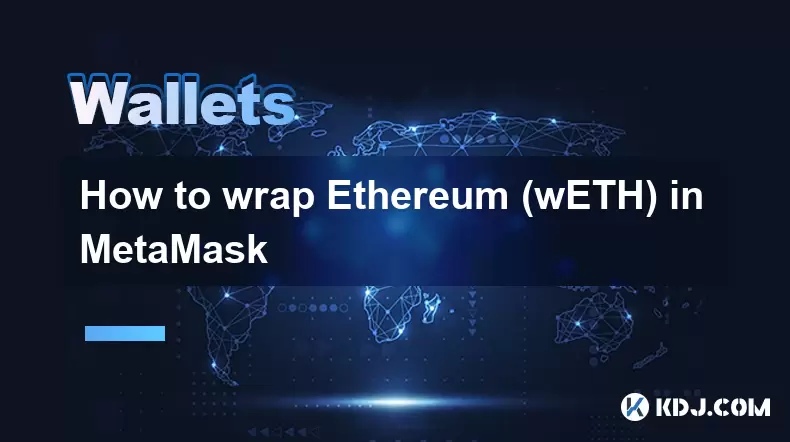
How to wrap Ethereum (wETH) in MetaMask
Aug 13,2025 at 11:36am
Understanding Wrapped Ethereum (wETH)Wrapped Ethereum (wETH) is a tokenized version of native Ethereum (ETH) that conforms to the ERC-20 standard, ena...

How to manage your portfolio in Exodus wallet
Aug 08,2025 at 10:07pm
Understanding the Exodus Wallet InterfaceThe Exodus wallet is a non-custodial cryptocurrency wallet that supports a wide range of digital assets. When...
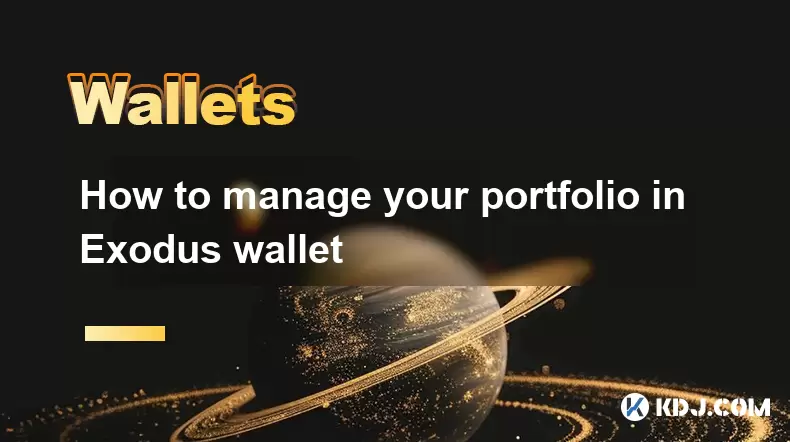
How to manage your portfolio in Exodus wallet
Aug 13,2025 at 11:35am
Understanding the Exodus Wallet InterfaceThe Exodus wallet is a non-custodial cryptocurrency wallet that supports a wide range of digital assets. Upon...

How to reset your MetaMask password
Aug 08,2025 at 01:28pm
Understanding the MetaMask Password Reset ProcessMany users confuse the MetaMask password with the seed phrase or private key, but they serve differen...
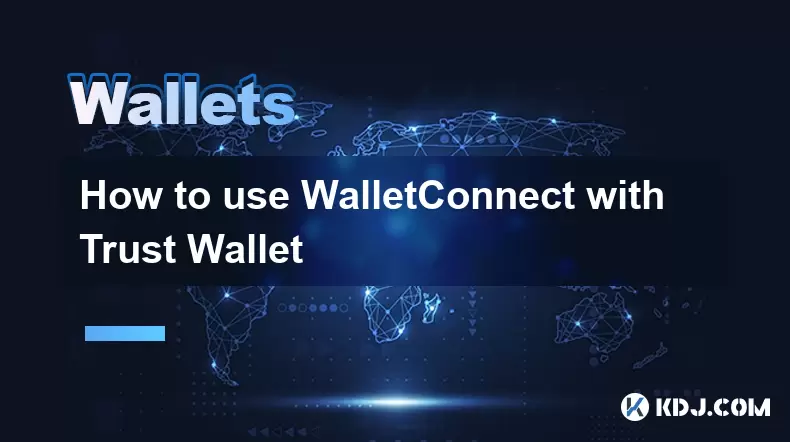
How to use WalletConnect with Trust Wallet
Aug 13,2025 at 01:07am
What Is WalletConnect and Why It Matters for Trust Wallet UsersWalletConnect is an open-source protocol that enables secure communication between dece...
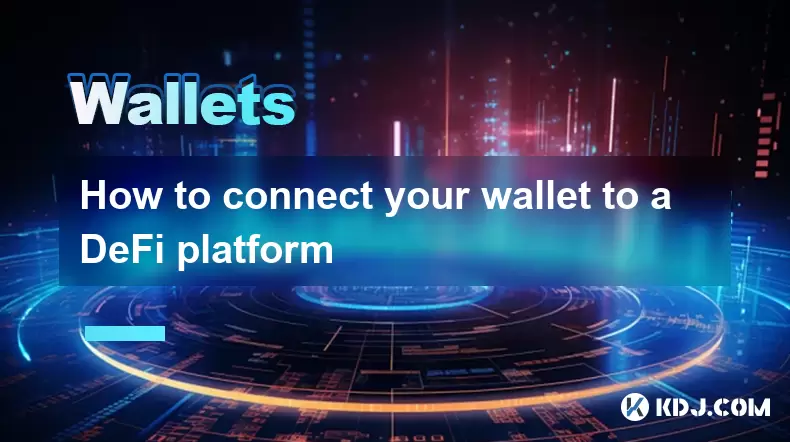
How to connect your wallet to a DeFi platform
Aug 13,2025 at 11:36am
Understanding Wallet Compatibility with DeFi PlatformsBefore connecting your wallet to any DeFi platform, it's essential to ensure your wallet is comp...

How to wrap Ethereum (wETH) in MetaMask
Aug 13,2025 at 11:36am
Understanding Wrapped Ethereum (wETH)Wrapped Ethereum (wETH) is a tokenized version of native Ethereum (ETH) that conforms to the ERC-20 standard, ena...

How to manage your portfolio in Exodus wallet
Aug 08,2025 at 10:07pm
Understanding the Exodus Wallet InterfaceThe Exodus wallet is a non-custodial cryptocurrency wallet that supports a wide range of digital assets. When...

How to manage your portfolio in Exodus wallet
Aug 13,2025 at 11:35am
Understanding the Exodus Wallet InterfaceThe Exodus wallet is a non-custodial cryptocurrency wallet that supports a wide range of digital assets. Upon...

How to reset your MetaMask password
Aug 08,2025 at 01:28pm
Understanding the MetaMask Password Reset ProcessMany users confuse the MetaMask password with the seed phrase or private key, but they serve differen...

How to use WalletConnect with Trust Wallet
Aug 13,2025 at 01:07am
What Is WalletConnect and Why It Matters for Trust Wallet UsersWalletConnect is an open-source protocol that enables secure communication between dece...

How to connect your wallet to a DeFi platform
Aug 13,2025 at 11:36am
Understanding Wallet Compatibility with DeFi PlatformsBefore connecting your wallet to any DeFi platform, it's essential to ensure your wallet is comp...
See all articles

























































































